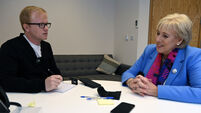There’s a clear and present danger in keeping interest rates extremely low

Under this regime, central banks set a medium-term target for inflation, usually a CPI rate of around 2%, and then attempt to steer actual inflation towards the target, using policy tools such as interest rates and quantitative easing.
To some extent, the adoption of inflation targeting was a response to the failure of previous monetary policy regimes, such as controlling the money supply or currency pegs. Keeping inflation close to target was seen as the best way that monetary policy could support long-term growth in the economy. It all sounds great in theory, but implementing inflation targeting in practice has proved a lot more challenging. In fact, it has failed over the past decade, but not in the way most people might have expected. Central banks have certainly been able to bring inflation down to target by raising interest rates. In this decade, though, there has been a widespread failure to get inflation back up to the target level — generally 2% — despite extremely loose monetary conditions.

















